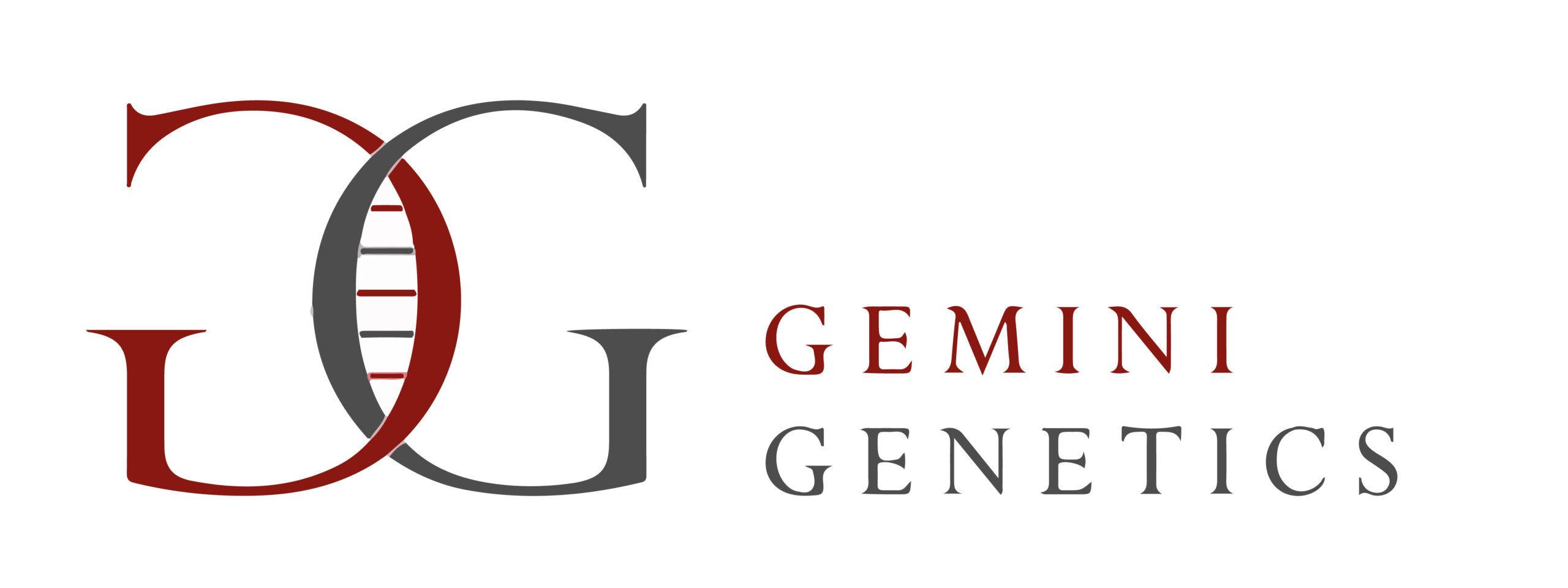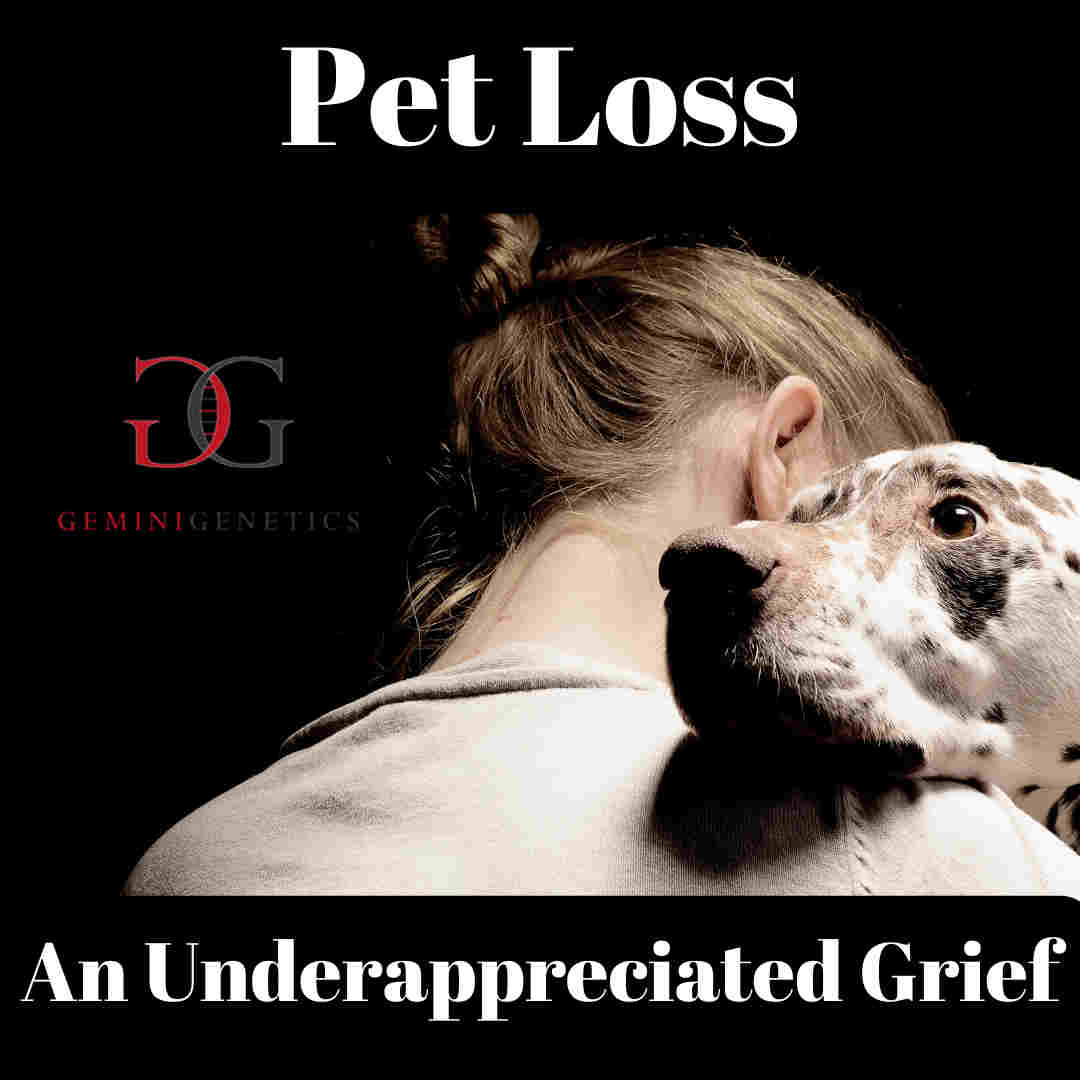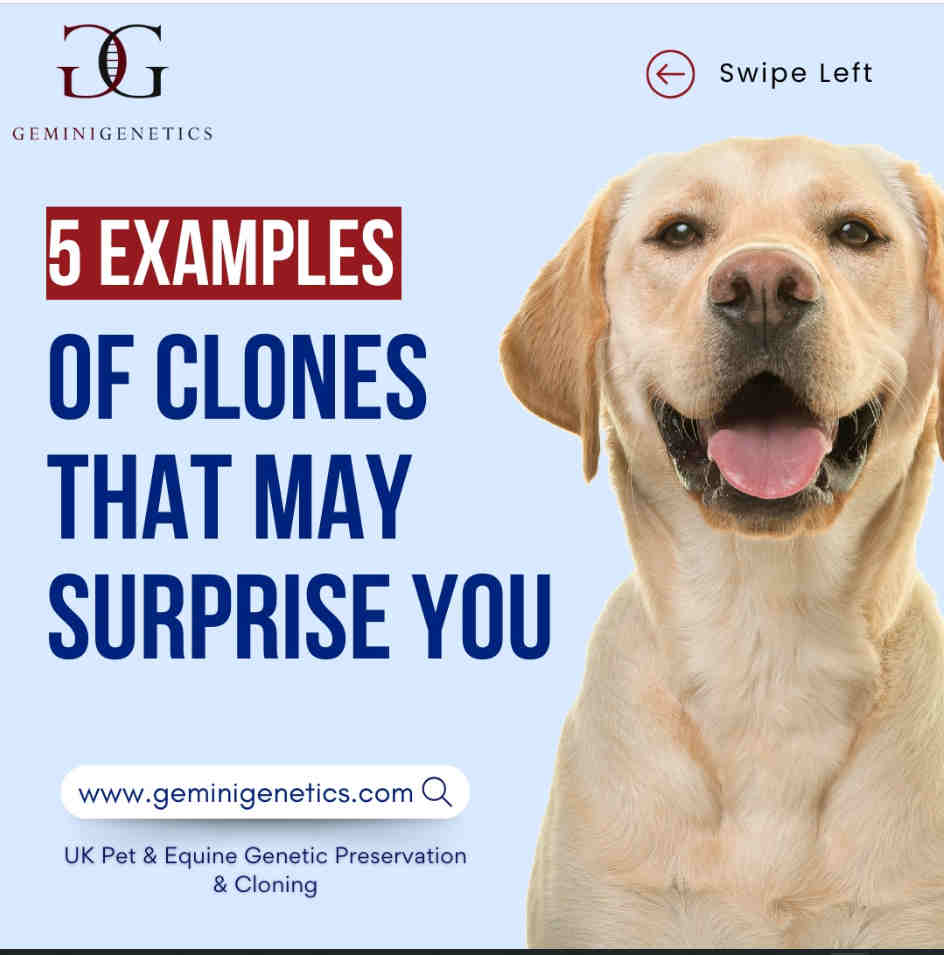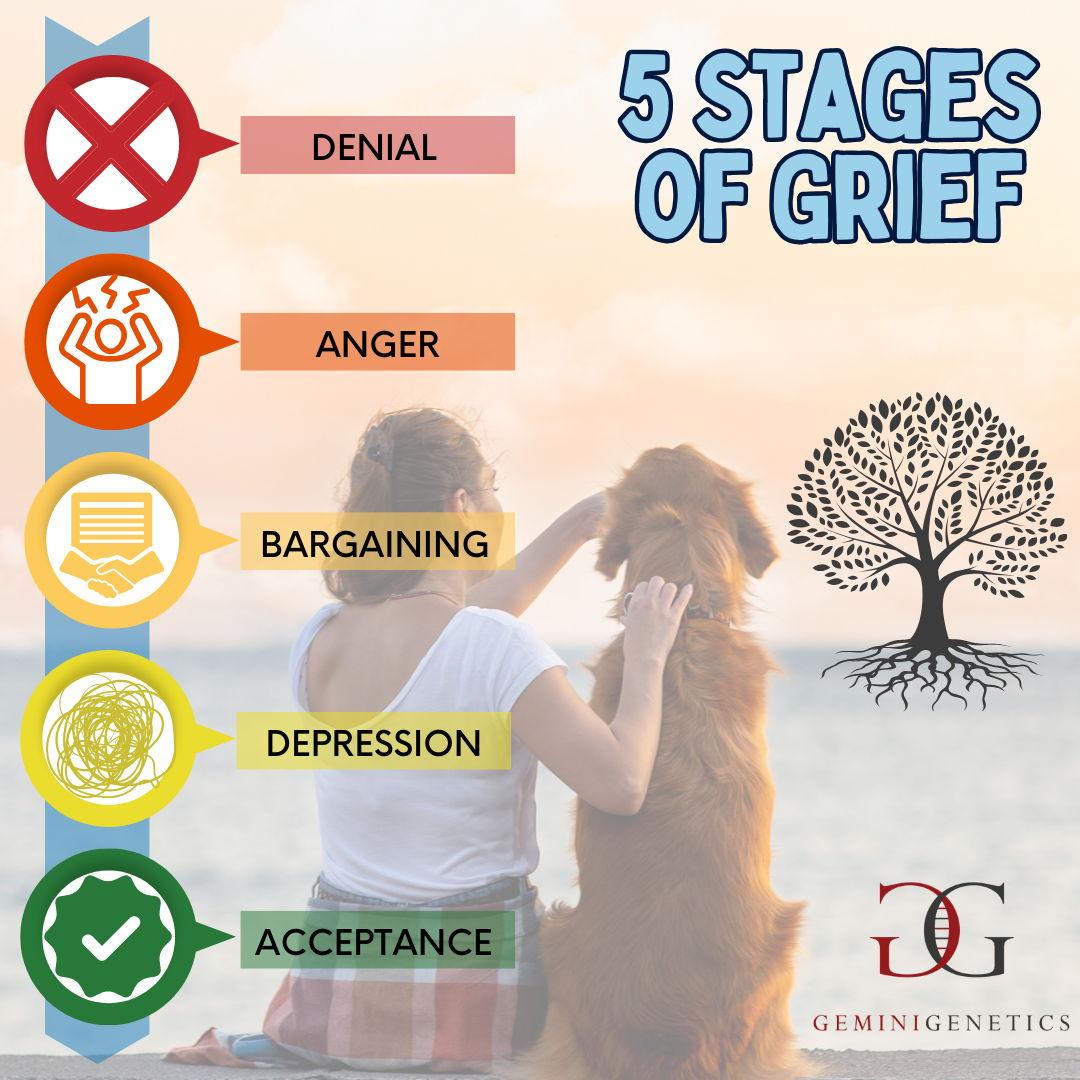Grieving the Loss of a Pet: Understanding, Healing, and Finding Comfort Losing a beloved pet…
How Does Pet Cloning Work? The Complete Process Explained
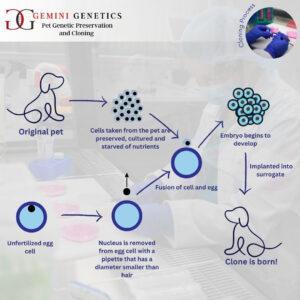
How Does Pet Cloning Work? The Complete Process Explained
Cloning a beloved pet may sound futuristic, but it’s now a real and accessible option for owners who want to preserve their companion’s unique legacy. At Gemini Genetics, we specialise in genetic preservation for pet cloning and partner with ViaGen Pets & Equine, the global leader in animal cloning, to bring this advanced service to the UK and Europe.
If you’re curious about ‘how does pet cloning work’ or considering it for your own pet, this guide explains exactly how pet cloning works—from initial sample collection to the birth of a genetic twin.
What Is Pet Cloning?
Pet cloning is the process of creating a genetic twin of your dog, cat, or horse. Using a technique called somatic cell nuclear transfer, DNA from your pet is inserted into a donor egg cell, which is then stimulated to develop into an embryo. That embryo is implanted into a surrogate mother, resulting in the birth of a pet genetically identical to your original.
Step 1: Genetic Preservation
The first step is genetic preservation. This means collecting a small sample of your pet’s skin tissue, which contains the living cells needed for future cloning. In most cases, this sample is collected after your pet has passed away, but it can also be taken during a veterinary procedure for living pets (with veterinary approval).
Sample requirements:
- For deceased pets: 1–2cm² ear snip and 6mm biopsy punches from the chest, neck, and inner thigh.
- For live pets: Four 6mm biopsy punches from the inner thighs (veterinary procedure only and only upon veterinary consent).
Timing:
Samples must be collected within 5 days of passing and kept chilled at +4°C—never frozen. You can access sample taking information here for cats and dogs and here for horses.
Step 2: DNA Preservation and Cell Culture
Once your sample arrives at Gemini Genetics, our expert laboratory team begins the DNA preservation process. Upon request, we culture the cells, encourage them to multiply, and confirm their viability for proceeding to the next stage of cloning. This process typically takes 7–10 days. Our full prices and service list can be found here.
Step 3: Secure Storage
Your pet’s preserved genetic material can be stored indefinitely at our secure UK facility. Many clients choose to store DNA for peace of mind, knowing they have the option to clone in the future. A monthly storage fee is applicable as detailed here
Step 4: The Cloning Process with ViaGen Pets & Equine
When you decide to proceed, we ship the preserved cells to ViaGen Pets & Equine in the US. Here’s how pet cloning works from there:
- The preserved cell’s nucleus is transferred into a donor egg.
- The egg is stimulated to develop into an embryo.
- The embryo is implanted into a surrogate mother.
- After a normal pregnancy, a healthy cloned pet—your pet’s genetic twin—is born.
How Similar Is the Clone?
A cloned pet shares its DNA with your original companion, making it a true genetic twin. While appearance and many traits are highly comparable, personality and behaviour can be influenced by environment and upbringing. Our partner company, ViaGen Pets and Equine, will be able to support on any questions you have regarding pet similarity. You can also find out directly from people who have already cloned their pet. Such as Kelly Anderson, with Cloned Kitty Belle.
Frequently Asked Questions
Q: Can I collect a sample from my pet while they are still alive?
A: Yes, with veterinary approval, a small skin sample can be taken during a scheduled procedure. You must always check suitability with your vet and the process of sample taking must always be completed by a vet.
Q: Is the cloned pet exactly the same as my original?
A: Genetically, yes. Your cloned pet is a genetic twin of the original. So the same as human identical twins. Personality and behaviour are shaped by life experiences as well as genetics, so a similar upbringing is required for maximum similarity between clone and original.
Q: What does pet cloning cost?
A: Genetic preservation is £600 (+VAT), cell culture is £1,600 (+VAT), and the cloning procedure with ViaGen Pets & Equine is $50,000. Monthly storage is £12 (+VAT). You can see our full prices here
Q: How long can my pet’s DNA be stored?
A: Indefinitely, as long as storage fees are maintained.
Q: How soon after my pet passes must I act?
A: Samples must be collected and sent within 5 days, kept chilled (not frozen), to ensure cell viability. Sample taking instructions can be accessed here and emergency assistance sought via calling our emergency and out of hours line – 07710 778 016. This number is also available on WhatsApp.
Q: Do I have to clone right away?
A: No. Many clients store their pet’s DNA for months or years before deciding to proceed with cloning.
How Does Pet Cloning Work? The Complete Process Explained
If you’d like to learn more or start the genetic preservation process, contact Gemini Genetics.
Our expert team is here to guide you through every step of your pet cloning journey.
